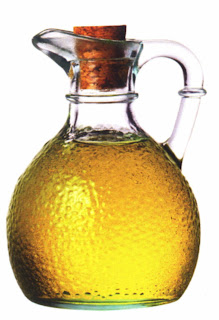Extra Virgin Olive Oil
The most commonly used and heard of olive oil is extra virgin. Extra virgin, along with the standard virgin olive oil, is extracted directly from the olive fruit by grinding the olives in thermal conditions which preserves the natural taste. The method for extracting the oil is what is known as “cold pressed,” which keeps the oil from losing its flavor that can be lost when exposed to high temperatures. Extra virgin olive oil is produced naturally, meaning that the oil is not made from any sort of chemical treatments. Virgin oil is also an indication that the oil is not refined, that they are of a higher quality and retain their natural flavor.
Pure Olive Oil
Pure olive oil is another oil, but the name can be misleading. Pure is actually a blend of either extra virgin or virgin olive oil and olive oils that are refined. It is used mainly when extracted olive oil is of poor quality and the refining process helps it to have a better flavor.
Many times, refined olive oil is used when frying as the taste is not as remarkable as the virgin oils. A product labeled simply Olive Oil, is nearly the same as something marked Pure Olive Oil in that it is refined with lack of taste.
Virgin Olive Oil
Virgin Olive Oil also comes from the first pressing, and is also produce without refining. In a technical sense, virgin olive oil may have an acidity level of up to 3,3%, however, industry practice in the producing countries is to maintain under 2% acidity. Its flavour intensity can vary and its taste is less mild than extra virgin olive oil.
Olive Pomace Oil
Pomace oil is the lowest grade of olive-based oils. Pomace is that part of the olive that remains after all the oil and water in it has been removed bt pressuring or centrifuging processes. With the use of the certain solvents, there is still some residual oil that can be extracted frome the olive pomace. This oil may then be refined, wich results in a product bereft of any specific taste or colour, it also contains none of olive oil's vitamins.
Lite Oil
There are certain light-tasting, light-coloured oils containing minute proportions, if at all, of virgin oils. These are pure rectified oils called lite oils. They are being marketed with a particular stant that would have people believe that they are buying oils that have lower in fat or calorie content. The truth is, lite oils have 125 calories per tablespoon, exactly like all olive oils, and all fats, for that matter.
In general olive oil is a good source of vitamin E and is rich in monounsaturated fats. However, extra virgin oil has the highest contest levels of these healthful nutrients and has the most exquisite flavours. It should come as no wonder that extra virgin olive oil is know as the queen of oils.





